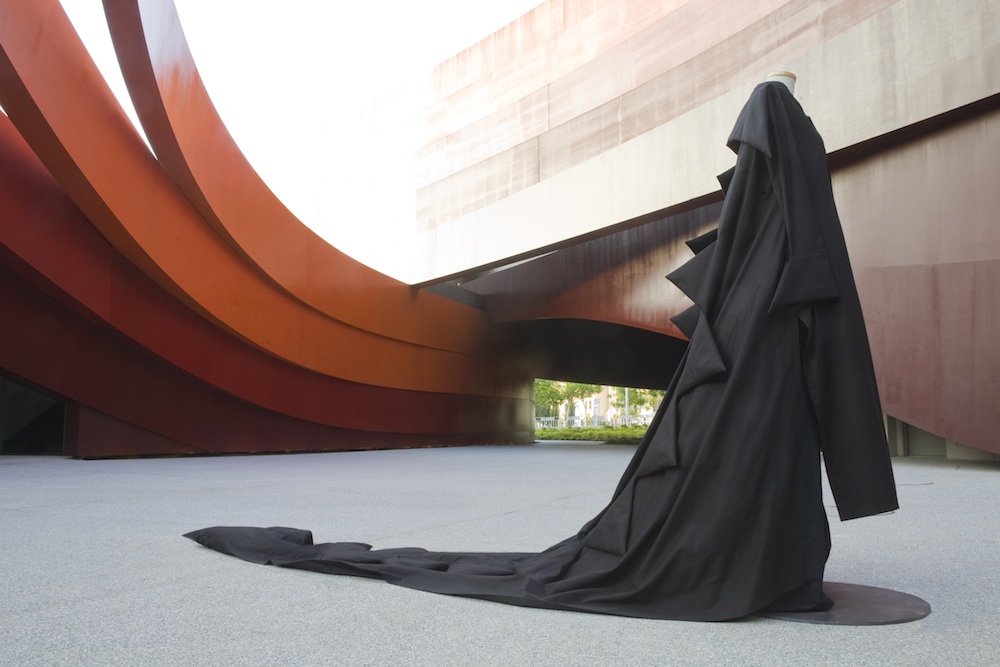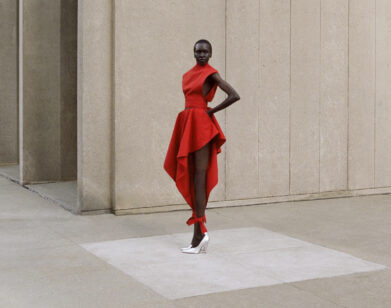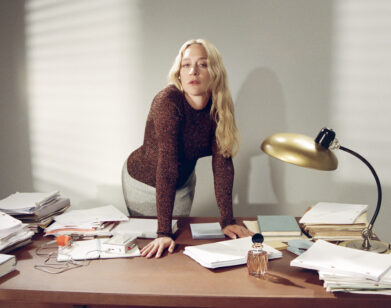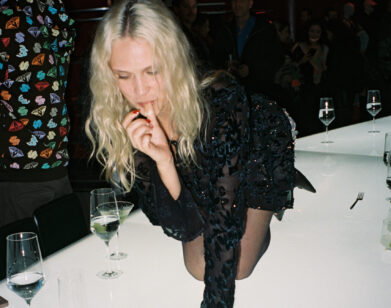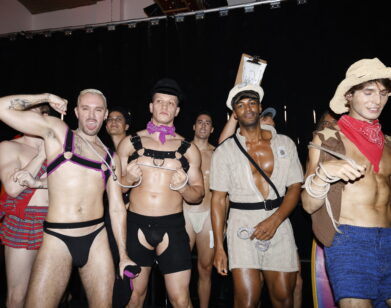Yohji Yamamoto’s Museum Style
Yohji Yamamoto, champion of the avant-garde, has built an empire crafting ready-to-wear clothing brilliantly complex in texture, fabric, and tailoring. Simple lines and a penchant for androgyny create striking effects, and a dark, primarily black palette is playful in its execution.
Opening today, the Japanese designer’s work will be celebrated in Israel for the first time at Design Museum Holon, as part of a series of traveling museum exhibitions. Along with Chief Curator Galit Gaon, Yamamoto conceived an installation specific to Holon’s Ron Arad-designed building, comprised of nearly 80 pieces of men’s and womenswear, ranging from his 1977 debut collection in Tokyo, his popular collaborations with brands like Adidas (Y-3), and pieces from the present day.
While his work is often moody and dramatic, this exhibition instead parallels the vibrant and colorful spirit of its host country, incorporating sound, bright hues and light to reveal a side of the designer that audiences are rarely privy to. Interview sat down Gaon for an insider’s perspective on organizing this monumental showing.
YASHA WALLIN: Yohji Yamamoto has had exhibitions of his oeuvre in London, Paris, and Florence. What about this show will be different?
GALIT GAON: Every exhibition of Yohji Yamamoto’s is a site-specific installation. This one became about the experience of how people are in Israel, which is very open, very honest; they’re touching each other, having fun. There’s something about being here that’s very human.
We’re a young museum with no collection, so we’re still free of the constraints of really big, serious museums. The major thing that artists have to interact with is the architecture of the building. With our museum, the aim is to create/extend this experience of experiments of faith and energy from the architecture of the building and take that inside to the galleries.
What Yohji Yamamoto did was to create three different energies in the museum by using the garments and the space itself. When you enter the museum, you see the lower gallery, which is very hectic and the energy is very high. Then you go into the second room and it’s more about observation and curiosity. You walk slower, you have to look closely, and you can spend a lot of time intimately connecting with the outfits. In the upper gallery, the whole space is floating in a red cloud of light, and in the center is the “tree of light” created from 275 bulbs. It’s a very holy place, not in the sense of a holy place for Christians, Muslims, or Jews, but rather it has the overall sense of holiness. It’s the foundation of the whole thing and will mean different things to different people around the world.
WALLIN: Is this the first solo exhibition of an international artist that Design Museum Holon has had?
GAON: It’s our first solo exhibition, period. But it was our opportunity to have an exhibition of a wonderful creator. I’m not sure if people in Israel have really had a chance to see his clothes firsthand. A lot of people are wearing Yohji Yamamoto, going to Europe and buying him, and some men I know are wearing him every day. For them it’s going to be a celebration. For the rest of us, it’s going to be an introduction of non-everyday, simple things that you wear.
I think eventually what we’re trying to do here is open up the discussion of how you teach people to choose better. I think design is one of the best tools you can use for that. After seeing this exhibition, maybe the next time you go select something from to a minimal shop you might think again about the details. You might see something else. You might re-look/re-feel the texture and different process of choosing. If you choose better, you recycle, you buy fewer products. You buy one very good chair, not 10 terrible chairs. In turn, it makes our life much better. Maybe it’s too optimistic, but I really feel we can make this change really slowly. If we work with kids, and teenagers, in 10 years they’re going to be the guys who decide major things in the Israeli economy, if they know that design is a very important part of their lives it’s going to benefit all of us.
WALLIN: Yohji Yamamoto’s work is considered avant-garde, but at the same time revered by many. Why do you think his aesthetic is so far-reaching?
GAON: Because I think Yohji is designing clothes for people. It’s not about him, it’s about us. Yesterday we were looking at this piece with the textiles folding again and again: layers upon layers. When you put it on, it looks like you had to dress yourself for two hours, but someone on Yohji’s team said, “Do you want to know how to put it on?” And he pointed to just one button. This is what makes it so appealing and so human and honest. And in this way his humor comes through.
WALLIN: As a curator working in Israel, how do you navigate the cultural protests that some artists impose on the country? For example, Alice Walker recently forbade The Color Purple from being translated into Hebrew.
GAON: We have a long discussion with every guest that comes here about the situation and what it means to be in a place like this. We’ve only had one artist tell us he’s not going to participate and we fully understood that. It was hard to hear but we respected his choice. We hope that one day we will actually succeed in creating a change in this region. We really hope that things are going to get better. The only thing you can do is stay very, very optimistic.

